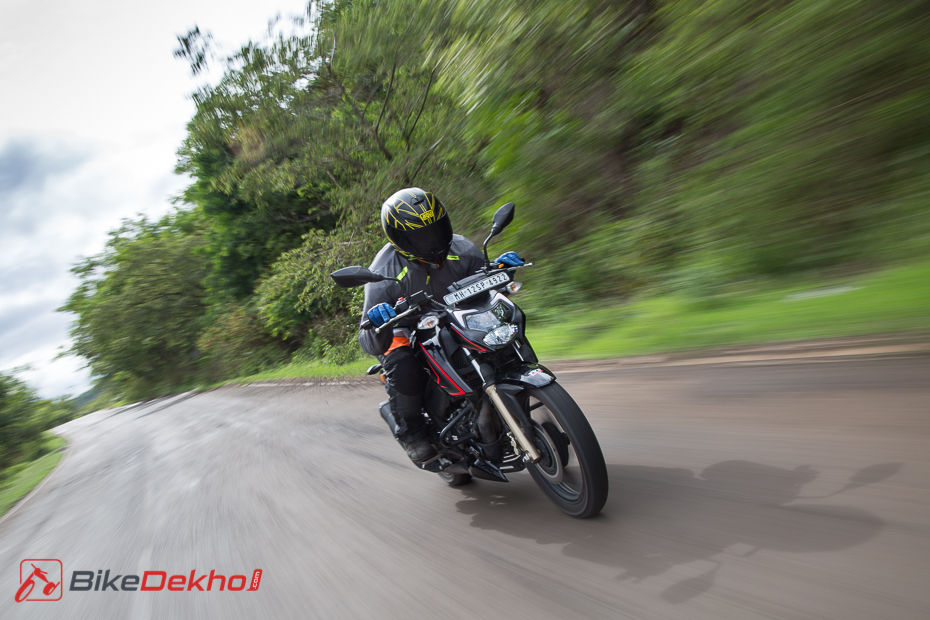2020 TVS Apache RTR 200 4V BS6: Review In Images
Modified On Jun 28, 2020 12:49 AM By Gaurav Sadanand for TVS Apache RTR 200 4V
- 1653 Views
- Write a comment
Don’t have the time to read a lengthy review? You may want to check out our picture gallery which lays down the strengths and weaknesses of the BS6 TVS Apache RTR 200 4V

As of June 2020, most two-wheeler manufacturers have managed to make the BS6 transition. While the updates usually extend to an engine tweak and a beefed up cat-con, some manufactures like TVS have used this opportunity to give their products some extra oomph. The BS6 Apache RTR 200 4V is one such example. It features a new LED headlight, an informative instrument console with GTT (Glide Through Traffic) and a couple of minor adjustments which improve the bike overall. All this comes at a premium of around Rs 11,000 over the BS4 model. So does it really justify an asking price of Rs 1.25 lakh ex-showroom Delhi?

For starters, there isn't much to differentiate the BS6 bike from the BS4 motorcycle, apart from the new LED headlamp. But we feel that with the new headlamp, the BS6 motorcycle looks more premium and is far superior to LED headlights on many of its competitors. It does a good job at illuminating the roads at night with its spread and intensity.

Though the overall design of the Apache RTR 200 4V remains unchanged, the rearview mirrors have been redesigned with a faux carbon fibre finish. While they offer adequate rear view visibility, we feel they could have offered better adjustability.

Another cosmetic update is the bronze plated chain which contrasts well with the black motorcycle, but you would have to keep them spotless to notice the difference.

Notably, the new BS6 Apache RTR 200 is 32mm longer and 55mm shorter than its BS4 predecessor, despite having the same bodywork.

The riding position is the same as the BS4 Apache RTR 200 4V. You are greeted with the same raised clip-on handlebars and 800mm seat height. For a rider of average height, the handlebar is easy to reach and the foot pegs are set low and slightly rear set so your feet do not get cramped up during longer rides.

The 800mm tall seat is easily accessible for 5ft 8inch riders.

The BS6 RTR 200 4V comes with ‘Glide Through Traffic,’ a torque-assist feature which prevents the motorcycle from stalling at low speeds. It works well provided you ease off the clutch in a progressive manner and do not dump it.

Its digital instrument console comes with Bluetooth connectivity and can be connected to TVS’ SmartXonnect app. While the app shows details such as lean angle and G-forces, the instrument console displays direction for navigation and caller ID. Most of the data like acceleration, lap timer and top speed will not be useful in daily use, but the gear position indicator is a welcome addition. Know more details about the SmartXonnect connectivity feature here.

The Apache RTR 200 still retains the 197.75cc oil-cooled single cylinder layout but now gets a new asymmetrical piston with new piston rings and revised valve timings for the 4-valve head. The intake gets a new layout and air filter while the exhaust system has been reworked on the inside. Power output remains identical though torque is down by a substantial 1.3Nm and now peaks 500rpm higher in the rev range.
While the fuel-injected BS6 Apache is marginally quicker in the run up to 60kmph, its lack of top end grunt makes it more than half a second slower to 100kmph than the carburetted BS4 Apache.

At city speeds, the RTR builds speed quickly, but at highway speeds, you will have to work a bit for quick overtakes as it loses steam at higher revs. The gearshifts do not feel as precise as some small capacity Japanese gearboxes we have seen but they have a positive shift action.

The BS6 RTR 200 4V retains the same hardware as before but features new Eurogrip Protorq SR tyres with a radial tyre at the rear. These tyres offer lots of grip and an immediate difference can be seen in the braking department. Braking times have significantly decreased and the motorcycle feels extremely stable under hard braking. The grip on damp road conditions too is commendable with no drama whatsoever.

Large bumps and sharp edges of potholes can be felt as the suspension is set on the firmer side. But, you won’t wince either as it blunts these shocks.

When it comes to handling, it still has that eagerness to turn into corners rapidly. These new tyres improve stability when leaned into turns and you feel a lot more confident making quick direction changes.

The drop in performance does not make much of a difference in the real world and the only time you will notice it is on highway runs. What you get in return is more refinement, better fuel efficiency and better tractability at low speeds.
It still retails the Apache’s dynamic capabilities and continues to be an enjoyable motorcycle to ride. As for the value for money (VFM) tag, we feel that despite the price hike, the RTR 200 still offers a lot more than other motorcycles in the 200cc segment. The VFM tag stays.
